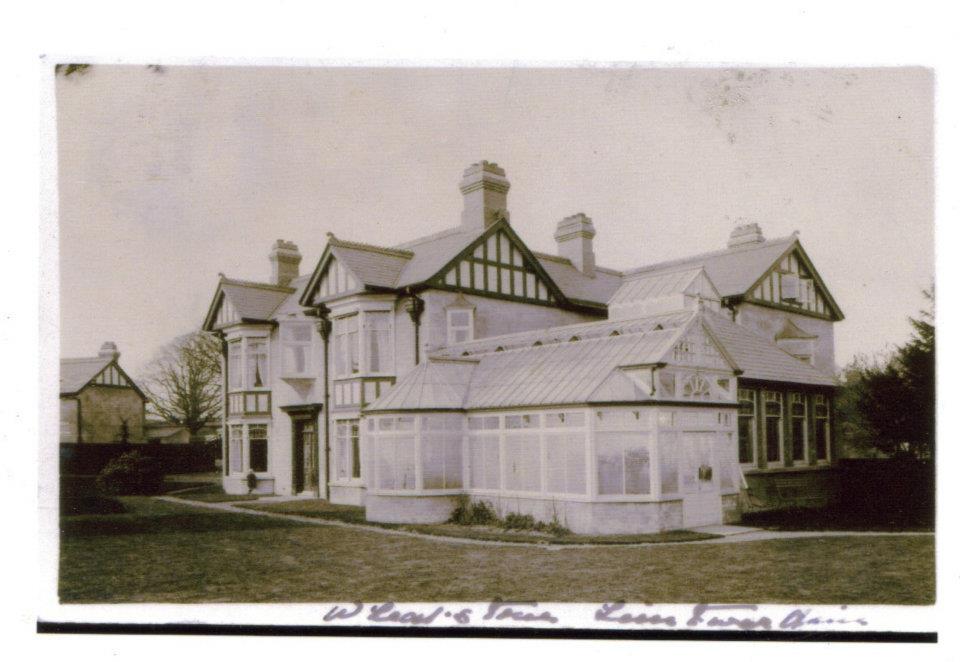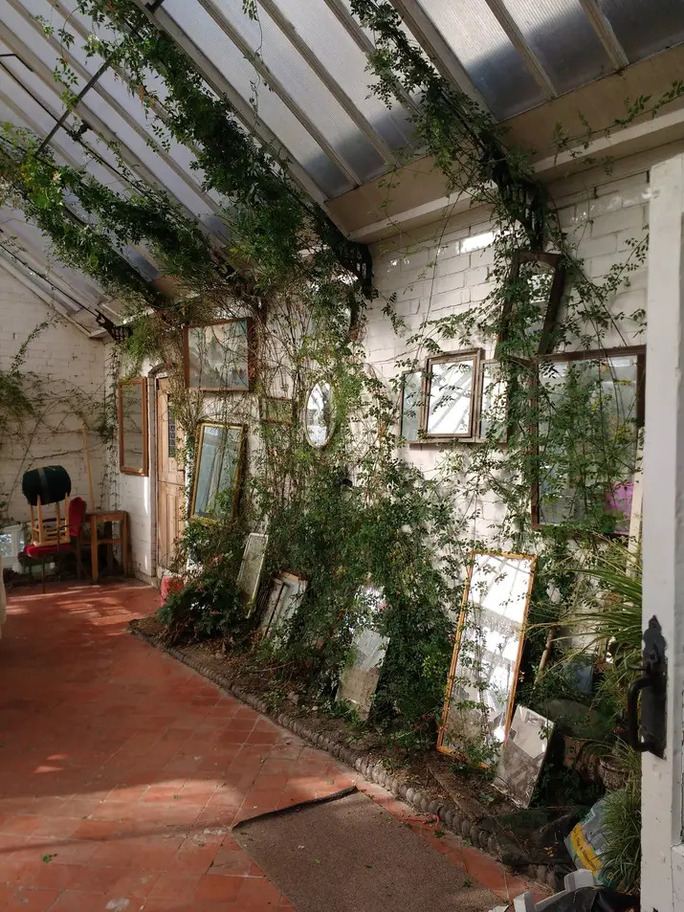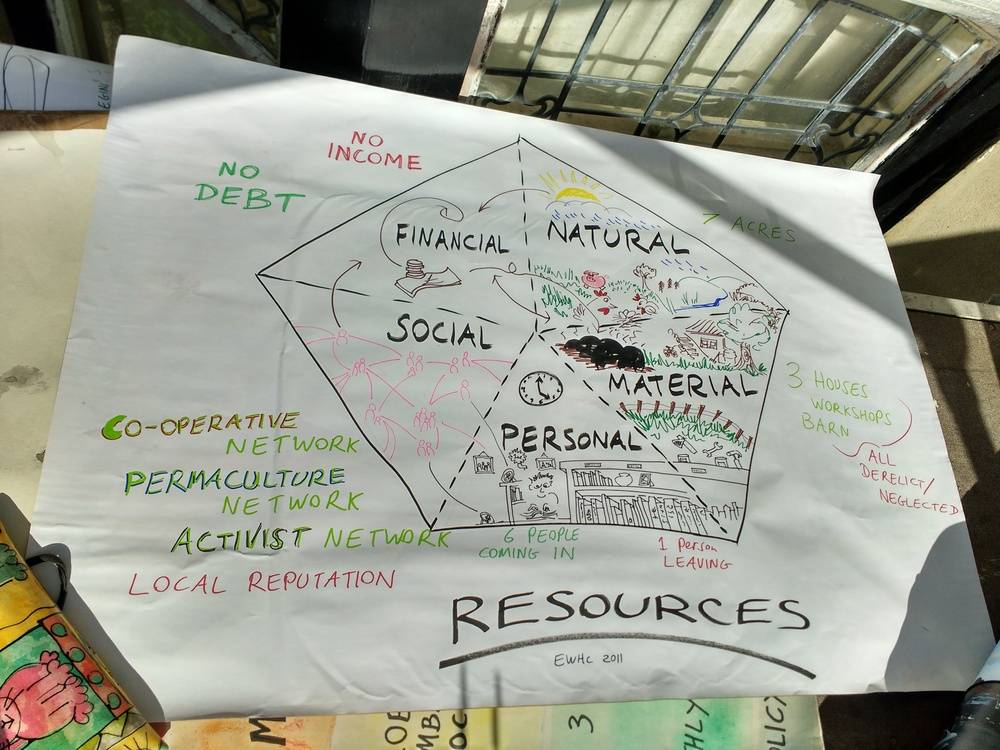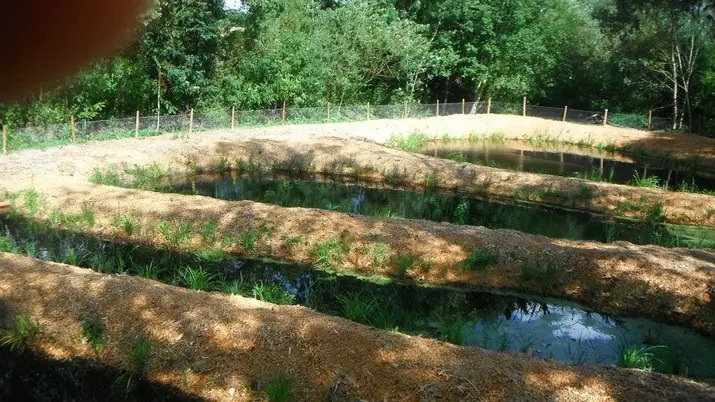
Pre-history
 Wheatstone House was built in 1909, with the conservatory, plumbing block and events room tagged on by 1912. No sooner was the place finished, than the man whose vision it had been, went off and died in the first world war.
Wheatstone House was built in 1909, with the conservatory, plumbing block and events room tagged on by 1912. No sooner was the place finished, than the man whose vision it had been, went off and died in the first world war.
Set in seven acres, our handful of buildings was designed for 1-3 wealthy residents and 10-13 servants. As far as we know, it never operated as designed – after the first world war, the whole culture of “Service” fragmented. The phrase “You can’t get the staff” originates from this period. Most houses of similar age and size were turned into flats or demolished, years ago, but ours stayed whole, ish; decaying for want of maintenance from the day it was finished, for 100 years!
Changing hands about 15 times in 30 years (we have all the deeds, proving how nobody quite ‘stuck’), in 1949 Wheatstone at last achieved some stability with the Bywater family, but it was already quite dilapidated and hard to maintain. Buckets collected drips, and the family only inhabited a few of the rooms in winter times.
The Commune arrives
Wheatstone was up for sale again in 1976, and a man called Mac Mudie borrowed a couple of grand from his aunty, and along with 3 other fresh faced crew, moved in intending to create some sort of social care centre. They had all worked in nursing, social care and education before they arrived and back in 1976 they unwittingly anticipated the surge of gardening/therapeutic/nature/day-care centres which flourished for disaffected urban youth and adults with learning difficulties, throughout the 80s and 90s and into the start of this century.
However the utopian work that Mac, Gina, Mike and Chris hoped to embark on obviously had to come _after_ a great deal of work on the house. To raise the money required for that, Mac's generation simply went round all their neighbours (mostly working farms back in 1976) and said they were up for any paid work that was going. Absolutely anything, they would do. Farm labour, deliveries, driving, animal husbandry, harvesting... “Just feed us jobs!” One of them had actually been a practising GP, and took on some shifts at the Leintwardine medical centre. Back in the ‘70s and ‘80s General Practices had the freedom to spontaneously respond to such an offer, which is hard to imagine today.
So, jobs trickled in, and the incomers got a few footholds in the community. They drank in the Swan, having just once walked in to the (then tiny) Sun Inn, and been repelled by a stony wall of local faces, that seemed to say "There's not much room in here, and you're not in our gang yet!"
Mac Mudie visited us in May/June 2014, and we took him to the modern, welcoming Sun Inn, which delighted him. He was also delighted at all the work and life going on here at Wheatstone. He hadn't been here since 1986, by which time the early solidarity had melted away and the wreckers (Opportunivores, I call them) had the place firmly in the grip of an almighty weigh-in. Parquet floors had been ripped up and burned, metal all stripped out for scrap money, warring tribes were entrenched in various corners and it felt like a social experiment had failed.
The original four were scattered, but the place was far from empty. Waves of people moved through, many assuming that the place was falling down, so it might as well be liquidated.
 From Commune to Co-op
From Commune to Co-op
In 1989, a group who had constituted themselves as a housing co-op called Earthworm, up in Manchester, heard about the place and came down to live here. A critical mass stuck, and by 1996 the seven acres, 4 buildings and several caravans, tipis, benders and trucks were owned by Earthworm Housing Co-op. This is a complex, legal story, that we’ll have to write another more specialist article about, another day! In short, it took ages to find Mac, but the co-op cannily kept details of all the working hours and material investments they had made, so that any other owner who came to light would have to at least re-imburse the co-op, if they "wanted it back".
To summarise, by 1996 Wheatstone House had won some stability – it was clear at last who lived here and who was just visiting. Rent came in and the co-ops tenant-directors agreed together how to spend it. This management structure exists to the present day, though over 70 members have come and gone.
Under the new management in the 1990s, very successful food-growing and produce-selling took off, and the newly housed co-op re-mortgaged itself to repair the roof of the main house and significantly refurbish the Stable Block, and mend the roof of the biggest house.
Saving the roof was the saving of the bigger "Wheatstone House" building, so we are hugely indebted to this generation of the co-op. We also have enormous respect for those members of the co-op, wwoofers (see www.wwoof.org.uk) and volunteers who got the kitchen garden into striking shape and took care of the orchards and woods.

The first decade of Earthworm Housing Co-op not only halted the decay of our accommodation, but really improved our soils and water management. Jay Abrahams of www.biologicdesign.co.uk was employed to build a first phase of pond construction and waste-water management. Phase one was completed around 1999. Phase two – with an older and wiser version of the very same Jay Abrahams! – was completed in 2014.
The 1999 works stopped run-off from the road regularly flooding our cellar and yard, and cleaned the waste water from the house more responsibly than the 1909 septic tank had. The 2014 wave provided a bigger system that could cope with 20 flushing adults, though we still have the dry composting toilets in good shape for both members and guests who prefer the gold standard of dry potassium-recycling!
The longest that any current members has lived here, is since 2011. In that year some of the current group moved in and plotted a raise in the rents, and a full renovation and reoccupation of all the buildings and just one caravan (we dismantled at least three!).
After much research, we raised £40,000 in Loanstock in 2014, some of it from fellow Leintwardine residents, who had never invested loanstock in a co-operative before. Other investors were our peers in the co-operative movement, and had never heard of Leintwardine before, but knew some of the current members through their work with the co-operative movement, the permaculture association, or working together on other projects.
By 2015 we had secured a £260,000 mortgage from Triodos Bank, and we had 8 members, 2 long-term paying guests and many visiting contractors and volunteers, helping us to renovate the place from rewiring and replumbing to structural repairs, new kitchens, bathrooms, windows and insulation. Wood-fired central-heating, safe, clean management of our own domestic sewage and major repairs to drainage and most of the guttering were swiftly accomplished, but the re-shaping, insulation and maintenance goes on, with some spaces scheduled to still look like a building site into 2027 at least.
At the time of writing – spring 2023 - we have 11 members, 4 children and not so many contractors and volunteers. We have learned a great deal, and are doing most of the work ourselves. When we have more space ready, we'll recruit another member or two...
Who we are looking for
Our membership application process
This summary of our history was written by current member Jane ‘Jed’ Picksley. She would be delighted to be corrected or further informed if you have any evidence from earlier days of the house, especially the 1909-1940 period. Please get in touch by e-mailing earthwormcooperative@yahoo.co.uk.
To get your head around our land, have a look at the words and maps in our Land Plan.